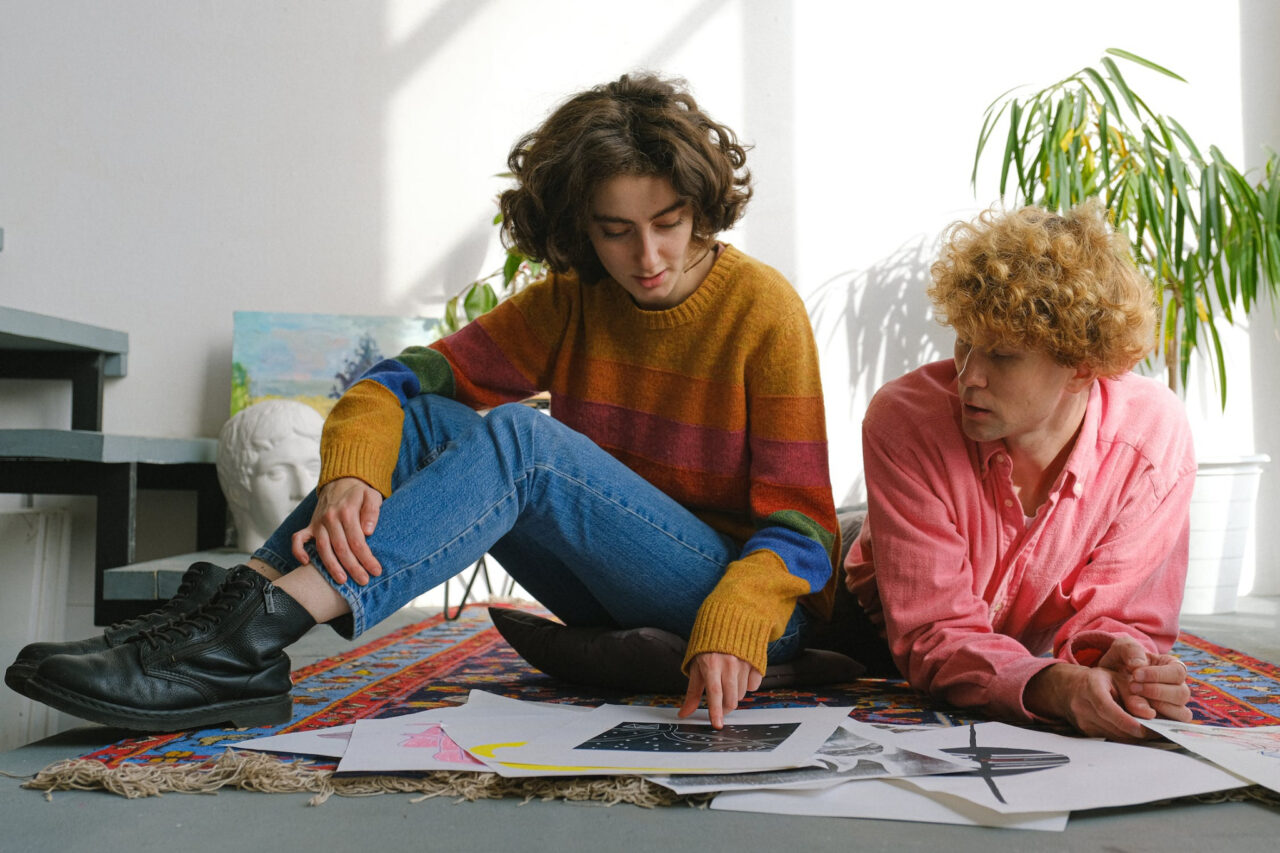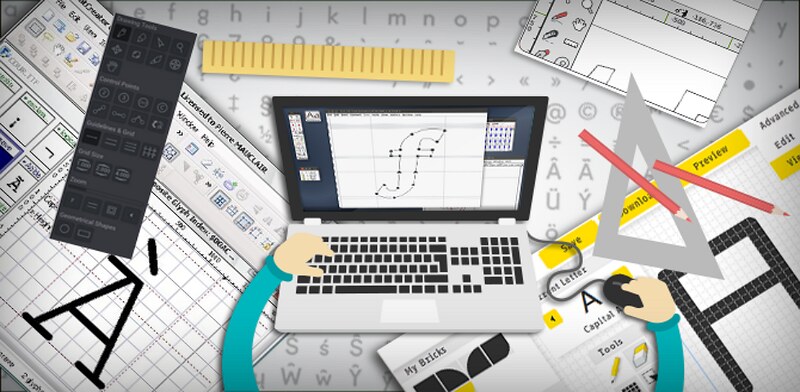Many young people want to know how to become a user interaction designer because this job emphasizes creativity and has a high salary. Also, you will have various job options to suit your skills and interests.
Today, I’m going to share how to get this job. Specifically, I’ll break this process into six steps with helpful tips to help you through each step.
Keep reading to discover!
Overview
Before pursuing this career, you need to know the job description and its requirements to know if you are a good fit for it.
Who Is A User Interaction Designer?
A user interaction designer is an expert in crafting intuitive and visually appealing interfaces. The goal is to enhance user engagement and satisfaction.
These designers work on:
- Buttons
- Menus
- Other things you click and tap on a website or app
They are different from UX designers, who look at the whole picture of how a website or app feels for users. User interaction designers focus on the small parts of the design. Meanwhile, UX designers work on the whole experience.
In short, user interaction designers care about how everything you do on a screen feels. They want to make it as smooth and enjoyable as possible.

Job Duties
As a user interaction designer, I focus on the little things people tap, swipe, and click on a website or app. To do that, I work with a team to ensure interface elements are in the right places and look good.
I also listen to what users want and try to make designs they’ll like, including the layout, color schemes, typography, and overall visual design. Then, I create drawings and test models to see if the designs work well.
Job Requirements
Typically, this job requires you to meet the following requirements:
- Degree: This job does not require a Bachelor’s degree. Thus, you can participate in short courses to gain background knowledge in this field. But a Bachelor’s degree will impress employers better.
- Experience: This position usually requires at least 2 years of experience. So you can apply for related jobs and gain experience in this time.
- Can Use Interaction Design Tools: This job requires proficiency in design tools like Adobe XD, Sketch, Figma, or other prototyping and design software.
If you do not meet any of the three requirements above, you will be knocked out of this competition by other candidates.
Working Environments
When you become a user interaction designer, you’ll work in places full of energy and ideas. It could be a big tech company, a creative agency, or a small startup.
Regarding teamwork, you’ll work with other designers, developers, and managers to discuss the designs and get suggestions.
Moreover, you can choose to work from home. You can use computers and the Internet to work and talk to your team. You can use video calls and special software to show your designs and get feedback.
How To Become A User Interaction Designer
Now I will share the steps to become a user interaction designer. Take out a pen and paper to note down my following tips!
1. Get A Degree
While this job doesn’t require a formal degree, I still recommend it to have a solid foundation in:
- Design principles
- User psychology
- Interaction design concepts
- User-centered design
These programs often teach you how to use popular design tools and software in the field. Also, it has group projects that help you know how to work with others.
To get a formal degree, look for universities or colleges that offer degrees in:
- Interaction Design
- UX Design
- Web Design
I recommend checking their curriculum, faculty expertise, and industry connections. Also, consider whether you want to attend classes on-campus or online programs. Many reputable colleges offer online design programs.
If you don’t want to pursue a formal degree but still want to get this job, a Bootcamp can help you enter the field. A design Bootcamp is a short, intensive training program that teaches you the skills needed to get this job.
In a Bootcamp, you learn directly from experts in the field. It also lets you connect with others who want to become designers. Just remember to research and choose a reputable one that fits your goals.
2. Develop An Aesthetic Sense

Developing an aesthetic sense is crucial for getting this job as it helps you create visually appealing and user-friendly digital experiences. If your work looks unique and attractive, it stands out from what others are doing.
So how to develop an aesthetic sense? The first thing you need to do is study simple rules like how to balance colors, shapes, and sizes. Typically, the educational programs I mentioned above will teach you these things.
Besides, I recommend noticing things you find beautiful in everyday life and trying to understand what makes them appealing. For example, you can look at paintings, buildings, and other designs to have ideas and inspiration.
Also, you need to learn how colors and fonts affect people’s feelings. Then, you can use this knowledge to choose the right ones for your designs.
When practicing, you can start by creating designs on your computer or paper and try to make them look organized. You can try different styles and ideas.
3. Invest In Design Software
Once you have the basics of the field, the next step is to invest in design software to put what you’ve learned into practice.
Some of the most popular tools for this job are Adobe XD, Sketch, Figma, InVision, and Axure. With them, you can finish your work quicker because they have features like templates that save time.
Some software even lets you make interactive designs that you can test to see if they’re easy for people to use.
Currently, many software has free trials, such as Adobe XD and Figma. So you can try them to see if you like how they work.
If a tool requires payment, I recommend choosing a plan that works with your money and what you need. Sometimes students get discounts. So let’s check for this.
Then, spend time using the software. You should try different tools, features, and techniques to build your skills. You can look for tutorials on YouTube or online courses to learn how to use it effectively.

4. Create A Portfolio
After you have the necessary education and skills, the next step is to create a portfolio to show your designs to employers. Instead of just saying you’re good at design, you can show actual examples in your portfolio.
So employers can see what kind of designs you make and know if your style matches their needs.
To create the best portfolio, choose the designs you’re most proud of. It’s like picking the best artwork to put in a gallery. So you should use clear pictures of your designs that look nice and show your work well.
Besides, your portfolio should include a mix of designs to show you can do many design types, not just one thing. With each, say why you made it, what problem it solves, and how you made it.
You can also use Dribbble and Behance to show your portfolio and make it easy for others to see your work. Don’t forget to add new designs to your portfolio as you make them.
When you finish your portfolio, I recommend asking friends or teachers for feedback. They can help you make it better.
5. Acquire Experience
Getting experience is vital if you want to be a great user interaction designer because it helps you improve your skills, learn from real-world challenges, and build a strong foundation for your career.

When you finish projects, you can put them in your portfolio to show others what you can do. So how to get experience? Here are some choices for you:
- Personal projects: Start with your projects. For example, you can redesign apps, create websites, or make your designs.
- Help others: Do design work for friends, family, or small businesses. It’s good practice, and you might even earn money.
- Internships: Look for internships at design companies. This option helps you work on real projects with experienced designers guiding you.
- Volunteer: Offer your design skills to nonprofit groups or community events (festivals, fundraisers, etc).
- Competitions: Find and join design contests on online platforms, such as 99designs and DesignCrowd, or social media (Instagram, Twitter, and Facebook).
Remember, getting better takes time. Every project you do helps you become a better interaction designer.
6. Seek Jobs
When to look for a user interaction designer job? In fact, whenever you are confident in your abilities, you can apply for this position. But the following milestones are most appropriate to start looking for a job:
- When you’ve learned the basics of design and how things work in websites and apps.
- When you have a good portfolio of your best design work to show to employers.
- When you’ve done internships or freelance design work.
Then, you can find jobs on Glassdoor, LinkedIn, Indeed, and Dribbble. Search for “User Interaction Designer” and where you want to work.
Otherwise, you can check out the design companies you like. They often have job openings listed on their own websites.
To create more opportunities to find a job, I recommend sharing your designs on art sites, such as Behance and Dribble. Employers often find designers there. I also see many job postings on social media.
When you apply for a job, remember to change your resume and cover letter to match the job’s needs. Then, send your application as soon as you find a job you like.
To get ready for interviews, you should practice talking about your designs and experiences for interviews.
I recommend starting with a junior or entry-level job to grow your career. Over time, as you gain more work experience, you can apply for higher positions.
Reasons to Become a User Interaction Designer
Becoming a user interaction designer offers many job choices, good pay, and lots of job growth, and you don’t have to be a coding expert.
So if you like making digital things better for people, this is a job for you.
Diverse Job Opportunities
These designers are needed in many industries like technology, healthcare, finance, etc. So you can work on projects you like, such as making a user-friendly banking app or designing engaging e-learning platforms.
High Salary
In 2023, a user interaction designer makes around $88,100 per year on average, and some in senior positions can earn even more, about $154,000 per year.
High Job Growth
The need for digital designers and web developers, which includes interaction designers, is growing a lot with 23% more jobs from 2021-2031. Every year, there will be about 21,800 new job openings in this field.
No Coding Skill Needed
You don’t have to be an expert coder to get this job. While knowing some coding can help, it’s not a must. Your main job is to make designs that people find easy to use.
Skills Required
What skills do you need to become a user interaction designer? Here are the required hard and soft skill sets for this job:
- Design tools: Know how to use Adobe XD, Sketch, Figma, or InVision to design.
- Wireframing and prototyping: Create basic layouts and clickable designs to visualize user interactions.
- Information architecture: Organize content and design navigation structures.
- Visual design principles: Know color theory, typography, layout, and visual hierarchy.
- Interaction design: Design how users interact with elements on a screen, including buttons, menus, and animations.
- Testing: Conduct tests to ensure that designs are user-friendly and easy to navigate.
- User research: Gather insights about user needs, tastes, and behaviors to inform design decisions.
- Responsive design: Create designs that work well on various devices and screen sizes.

- Creativity: Coming up with new and cool design ideas.
- Communication: Telling your ideas to others in a way they understand.
- Teamwork: Being good at designing with others like developers and bosses.
- Problem-solving: Finding ways to fix design problems.
- Time Management: Using time well to finish designs on time.
- User-centered mindset: Always thinking about what users want.
How Long Does It Take To Become a User Interaction Designer?
It can take anywhere from 3 to 6 years to develop the necessary skills and knowledge.
A degree in this field could take 2 to 4 years, depending on the program. Shorter paths include Bootcamps that take a few months of focused training. Then, gaining practical experience could take 1 to 2 years to feel confident.
Remember, learning never really stops in design. You have to keep learning because things change. So, it’s not about a fixed time but how much effort you put in and how willing you are to keep learning.
Conclusion
The factor that determines whether you get this job or not depends on your passion and creativity. Thus, use those two factors as a foundation to go through every step of my guides on how to become a user interaction designer above.
I believe you have already figured out what to do to get this job. Start this journey today to quickly become a successful user interaction designer!
